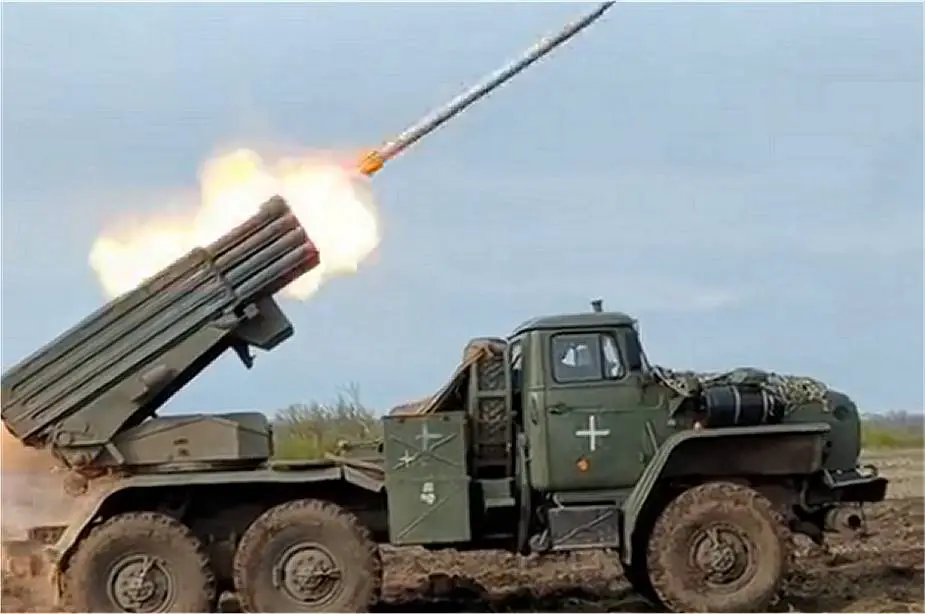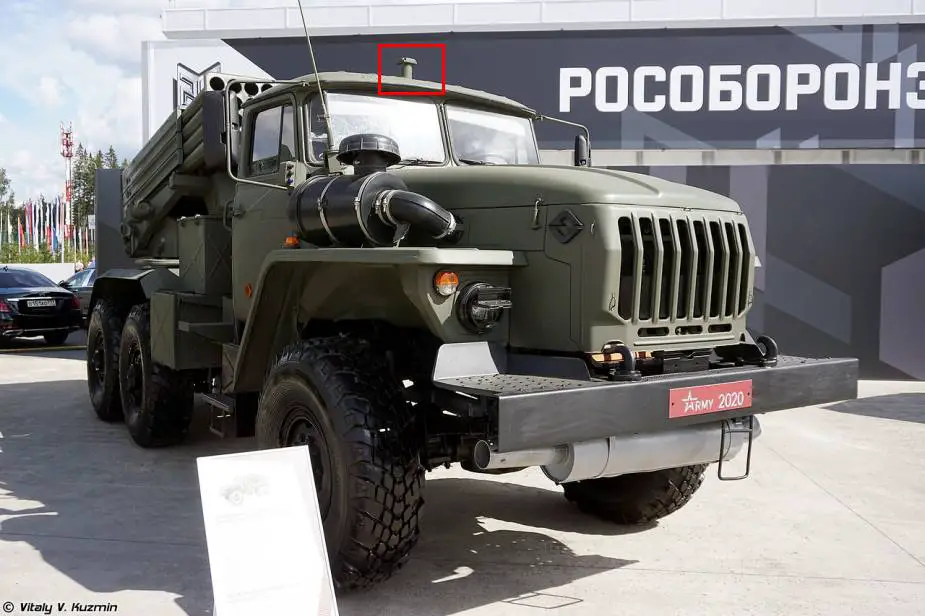A video was published on the "Praise The Steph" Twitter account on April 25, 2023, showing Ukrainian soldiers shelling the Russian positions with captured Tornado-G 122mm MLRS (Multiple Launch Rocket System). According to our information, no source had yet mentioned the capture of Russian Tornado-G MLRSs by the Ukrainian army.
Follow Army Recognition on Google News at this link

Ukrainian soldiers use captured Russian Tornado-G 122mm MLRS Multiple Launch Rocket Systems to strike Russian positions. (Picture source Screen shot video published on Praise The Steph Twitter account)
On October 7, 2022, the British Ministry of Defense announced via its Twitter account that re-purposed captured Russian equipment now makes up a large proportion of Ukraine's military hardware. Ukraine has likely captured at least 440 Russian Main Battle Tanks, and around 650 other armored vehicles since the beginning of the invasion by the Russian armed forces. over half of Ukraine's currently fielded tank fleet potentially consists of captured Russian combat vehicles.
The Tornado-G is a modern Russian multiple rocket launcher system developed as an advanced replacement for the older BM-21 Grad which has been in service since the early 1960s and has seen numerous upgrades and modifications over the years. However, the Tornado-G represents a significant leap in capabilities compared to its predecessor. It entered into service with the Russian army in 2012.
The Tornado-G can easily be identified compared to the BM-21 thanks to the GPS antenna mounted on the roof of the crew cabin.
The design of the Tornado-G is similar to the BM-21 and is also based on Ural-4320 6x6 military truck. The main feature of the BM-21 is its M-21 Field Rocket System, which comprises a rectangular launcher assembly with 40 launch tubes arranged in a 4x10 configuration. The tubes are made of steel and are mounted on a swiveling and elevating frame, allowing for changes in azimuth (horizontal rotation) and elevation (vertical angle) to adjust the firing trajectory.
The Tornado-G system incorporates advanced guidance and navigation systems, including GLONASS (Russian global navigation satellite system), which allows for more precise targeting compared to the unguided rockets of the BM-21. This increased accuracy reduces the number of rockets needed to neutralize a target, thus minimizing collateral damage.
The Tornado-G is designed to be compatible with all existing BM-21 rockets. While some sources suggest that the new Tornado-G rockets can achieve a maximum range of 90-100 km, this information has not been officially confirmed. The rockets used by the Tornado-G can be equipped with cluster warheads, which contain self-guided multi-purpose sub-munitions capable of reaching a maximum firing range of 30 km. These sub-munitions are effective against enemy infantry and armored vehicles, penetrating 60 to 100 mm of rolled steel armor. Additionally, the Tornado-G can launch newly-developed rockets fitted with HE-FRAG (High Explosive Fragmentation) warheads, which have a firing range of up to 40 km.

The Tornado-G can easily be identified compared to the BM-21 thanks to the GPS antenna mounted on the roof of the crew cabin.















